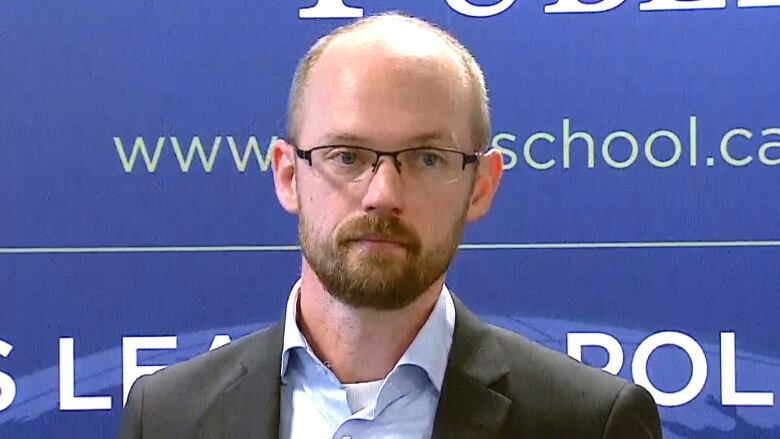Alberta needs to consider sales tax or face drastic cuts to close fiscal gap, says economist
Trevor Tombe says UCP spending freeze would ease pressures but it doesn't deal with long-term challenges

The United Conservative Party plan to balance the books by 2022 could work, but it fails to address the long-term fiscal challenge in Alberta, according to economist Trevor Tombe.
Tombeprovided an update to his October 2018 School of Public Policy report on Wednesday, showing the impact of a UCP government spending freeze.
In his previous report, Tombe said a mix of new taxes specifically a sales tax and spending restraint was needed to avoid spiraling debt.
In his update, hesaid the loss of revenue from the UCPcorporate tax cuts and elimination of the carbon taxcould be offset by the spending restraint and could "plausibly lead to a balanced budget by 2022," but this doesn't address the long-term fiscal challenges facing Alberta.
"The long-run challenge is lessened, it's cut by nearly half, but there remains a significant fiscal challenge in the long run for us to address," Tombe said in an interview.
He cites an aging population and a lack of government revenue streams as ongoing challenges to fiscal stability in Alberta and says one option to control debt in the future is to restrain spending beyond 2022 to population plus inflation.
"This would be an unprecedented level of spending restraint and particularly difficult in the face of an aging population," he said.
Tax or cut
Tombe said going into the 2020s, the fiscal gap remains large and would require an ongoing sales tax of about four per cent or spending cuts on the order of about $4 billion in order to close it.
The shocks from a tax or spending cuts could be lessened with a mixture of both.
"Should we freeze spending to grow only with inflation and population after 2022, which would be hard in the face of an aging population, or should we start talking about sales taxes or other types of revenue streams for the Alberta government," he said.
Kenney to appoint blue-ribbon panel
Details of the new UCP government's fiscal plan likely won't become clear for several months. Speaking ata news conference in Edmonton Wednesday, Premier Jason Kenneysaid he's reaching out for expert advice before he tables a budget in the fall.
"Our first step there will be to appoint a blue-ribbon panel on the province's finances," he said. The panel will be given a mandate to report back this summer.
Without the spending restraint promised in the UCP budget, Tombe forecasts debt could hit 50 per cent of GDP by 2040, while the UCP cuts bring that down to just over 20 per cent.
Tombe forecasts that could drop below zero if spending is frozen at population plus inflation.
Royalty revenue
Of course, this all sits atop the assumption that oil and gas royalties will continue to fill government coffers and rise over the course of the next decades.
The UCP is banking on royalty revenues around $8 to $9 billion, says Tombe.
"That's not unreasonable, it's quite close to what I forecast for that time as well and actually less than what the government is forecasting in their last third-quarter fiscal update," he said.
"But of course anything can happen. Pipeline delays shrink that number. Developments globally can shrink that number."












_(720p).jpg)


 OFFICIAL HD MUSIC VIDEO.jpg)
.jpg)



























































































